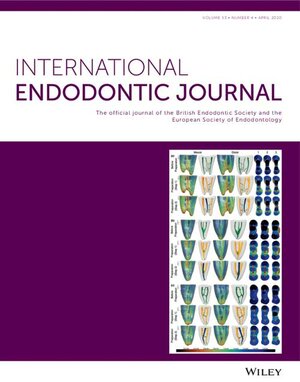Robotic navigation system for management of pulp canal obliteration: A case report
Abstract
Aim
To describe the application and management of robotic navigation system in access cavity preparation of a maxillary central incisor with severe pulp canal obliteration.
Summary
The identification and preparation of root canal(s) in teeth with pulp canal obliteration (PCO) may be challenging, resulting in excessive removal of sound dentine and/or perforation. A static or dynamic navigation system has been demonstrated to be a useful aid to locate obliterated canals with minimal removal of sound dentine. However, navigation systems are not completely infallible, with potentially poorer outcomes when used by an inexperienced operator. This novel case adds to the emerging clinical literature on the robotic navigation system (RNS) in endodontics to increase the accuracy of access cavity preparation and to preserve tooth substance in a tooth with PCO and diagnosed with chronic periapical periodontitis. A 34-year-old male was referred for the management of an endodontic problem. His chief complaint was intermittent, mild discomfort which lingered for over 30 s localized to the upper left central incisor tooth #9 (21) to cold drinks for 1 week. Clinical examination revealed that tooth #9 (21) was tender to percussion and cold thermal testing reproduced the patient's presenting symptoms. A radiograph, including a cone beam computed tomography scan, revealed pulp canal obliteration and widening of the periodontal ligament of the apical third of tooth #9 (21). A diagnosis of symptomatic irreversible pulpitis was reached. The Digital Information and Communication in Medicine (DICOM) dataset was exported into an RNS. The RNS successfully accessed the canal without any human intervention, after which endodontic treatment was completed by an endodontist. At a 12-month review, the tooth was asymptomatic and a radiograph confirmed healthy periapical tissues. This case highlights the potential use of RNS for minimal access and time-saving access cavity preparation of teeth with PCO.
Key learning points
- Multiple factors can lead to pulp canal obliteration, making it difficult to locate and negotiate the root canal.
- Robotic navigation system is a minimally invasive, efficient, and predictable solution for managing calcified root canals.

 求助内容:
求助内容: 应助结果提醒方式:
应助结果提醒方式:


